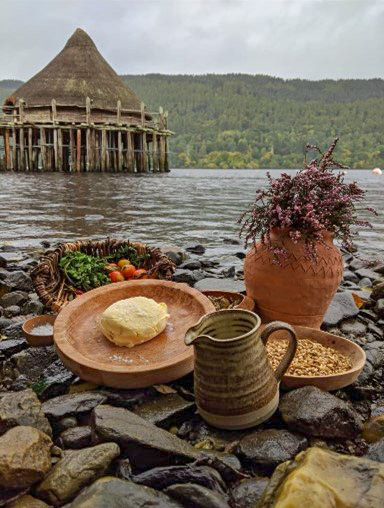Crannog Apprentice Georgia shares a recipe developed by the cooking team at the Crannog Centre!
You could say this recipe was a happy accident… my supervisor Rachel asked me to show her how I make my bread dough and my kneading technique. So we spent half an hour making dough and kneading it, then put it by the fire as we normally would to let it rise. It was a very rainy day and we didn’t notice that the bread was getting rained on, a puddle had formed on top of the cloth, and the bread dough was swimming in the water!
After a short panic, and the realisation that the bread could not be saved, we developed a recipe that didn’t need to rise and that was quick to make. This recipe is a honey bread, which went down very well with all the customers and the staff – some customers even went for seconds! One interpreter Graham said, “this is the best thing that has ever been made here”. So I have decided to share the recipe with you all now.
So to make this recipe you will need:
o 1 cup of honey
o 3 cups of barley flour
o 1 cup of chopped hazelnuts
o 1 cup of buttermilk (use normal milk if don’t have buttermilk, I had some from the butter I made earlier that day)
o 1 tsp of salt
o 1 cup of chopped crab apples for extra flavouring




Mix all of these ingredients together in a bowl, making a soft dough. Rolling into small balls and pressing down to form small flat cakes. To cook, dust a hot griddle with flour to prevent them from sticking (we used a hot stone but if you don’t have one of these in your kitchen a griddle or frying pan will be fine). Turn them halfway through. They can be eaten hot or cold and are nice spread with butter.
I made the butter myself using an iron age whisk which took around 45 minutes. I used the buttermilk in the bread and spread with my own butter to finish.
I am also currently in the process of making my own butter dish as my project, and then hopefully write an iron age recipe book, which will be sold in the shop.
Happy baking!

(Funding for the apprenticeship programme kindly supported by the Gannochy Trust, Museums Galleries Scotland, Perth & Kinross Council and SSE Renewables)



